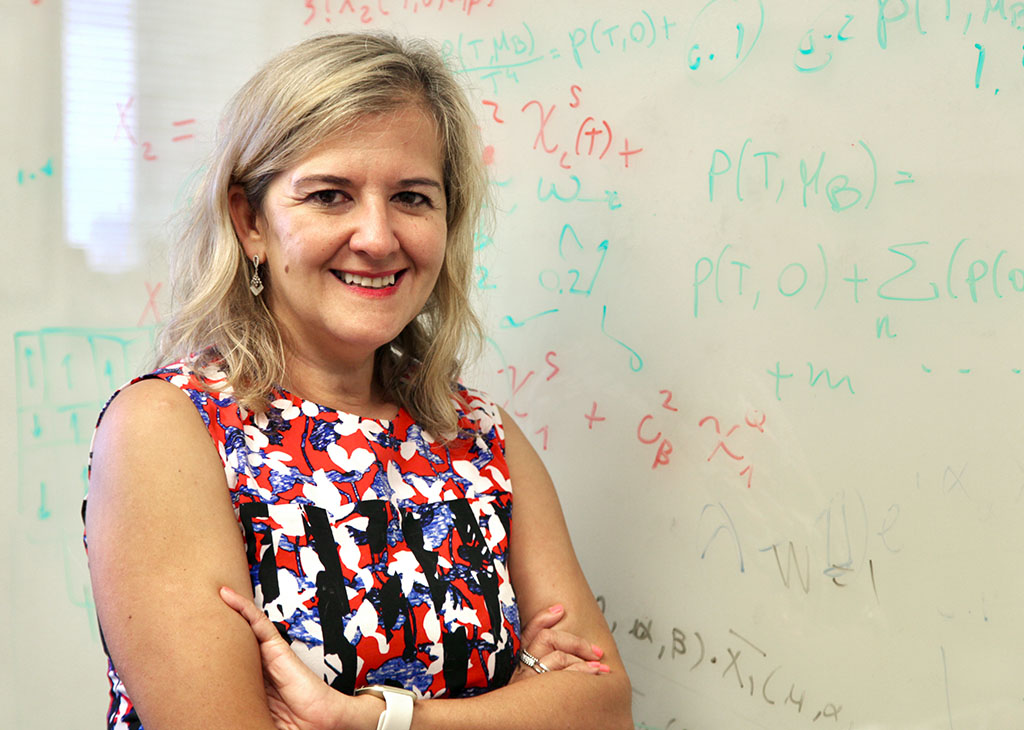Through Seismographs and Other Tools, Claudia Ratti Looks to Uncover New Details About Matter and the Universe
Claudia Ratti, M.D. Anderson Professor of Physics at the University of Houston, received a three-year, $600,000 NASA grant to lead a study that is looking closely at neutron stars. She’s particularly interested in what they contain. Ratti hopes that a better understanding of these stars will unlock new details about our universe, how it formed and its composition.

Origin of Neutron Stars
Neutron stars are the remnants of supernova explosions, which are the cataclysmic deaths of massive stars. The explosions result in the star expelling its outer layers into space. The core that remains collapses under gravity to such an extent that protons and electrons combine to form neutrons.
“During a supernova, the extreme temperatures and pressures facilitate nuclear reactions that produce a variety of heavy elements,” said Ratti.
Neutron stars contribute to the amount of cosmic elements through their dramatic collisions.
“I’m trying to find out if a core of quarks exists inside neutron stars,” said Ratti. “Neutron stars typically have masses that are larger than the Sun, but their radii are less than 10 miles. This makes them one of the densest forms of matter in the universe.”
Quarks are fundamental particles that form the building blocks of matter. They combine to create protons and neutrons, which make up the nucleus of atoms. Atoms are the basic units of matter.
“The challenge is that you can’t pull quarks out because the strong force pulls them back together,” explained Ratti. “To reverse this, we could smash together a large number of protons and neutrons in a particle accelerator, accelerate them nearly to the speed of light, and create a huge amount of energy.”
Support from NASA
Ratti, on the faculty of UH’s College of Natural Sciences and Mathematics, is conducting research relevant for NASA’s Artemis project and the Neutron Star Interior Composition Explorer (NICER) housed on the International Space Station (ISS).
For Artemis, Ratti is collaborating with NASA to bring new seismographs to the moon. The Apollo program was the last time NASA accomplished this task. Ratti’s calculations will help to narrow down the seismograph properties needed to detect strangelets, a dark matter candidate that could be denser and more stable than common matter.
“Seismographs are used to detect seismic activity on the moon,” explained Ratti. “Once the new equipment is in place, this will help provide more accurate results.
Ratti will use the capabilities of NASA’s NICER observatory to examine the components of neutron stars. NICER can also examine black holes and other extraterrestrial characteristics.
A Natural Laboratory
Ratti sees another advantage to studying neutron stars.
“Neutron stars serve as natural laboratories for studying matter under extreme conditions,” said Ratti. “The insights gained from observing neutron stars and their mergers help physicists test the limits of nuclear physics and general relativity.”
The extreme density and strong magnetic fields of neutron stars provide a unique environment that cannot be replicated on Earth, allowing scientists to explore the properties of matter beyond nuclear densities and the behavior of space-time in intense gravitational fields.
Ratti’s project, “Strange Quarks in the Cosmos,” is set to begin in September.
- Chris Guillory, College of Natural Sciences and Mathematics